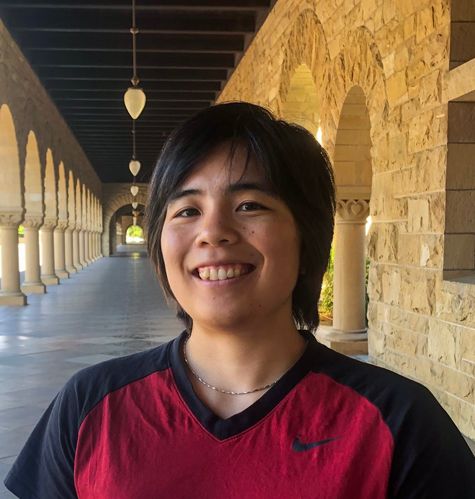Early Career Scientist Spotlight
Dr. Stacey Huang (she/her/hers)
Radar Geodesist
Geodesy and Geophysics Laboratory (61A)
What inspired you to pursue a career in radar geodesy?
Radar geodesy is quite a specific field, and I definitely didn’t know about it growing up. In a general sense, I was inspired to pursue a career in STEM through exposure from a lot of museums as a kid. I was always interested in learning how things worked, from the Earth and the stars to the machines we use every day. I must have spent hours staring at this massive globe that they’d set up at the Tech Museum in downtown San Jose (now called the Tech Interactive) that cycled through displays of different remote sensing data available of the Earth at the time. I remember being quickly entranced by the dazzling array of colors from data collected by the Sea-viewing Wide Field-of-view Sensor (SeaWiFS) and I would get fixated, watching how quickly disturbances in the ocean propagated all around the world after the 2004 Sumatra Earthquake. Natural history museums and air and space museums were other favorites of mine.
In my freshman year of college, I somehow stumbled upon my PhD advisor’s CV during an existential crisis about choosing a major. That’s when I first learned about the mysterious field of radar geodesy, which in a general sense is the study of the properties of solid Earth (and other planets) using radar-based instruments. I was struck by how the field seemed to fit nicely between Earth science and engineering, with both highly technical aspects and science applications. Because the field is fairly specialized, I didn’t run into it again until I was considering PhD programs – when I ended up taking the plunge to learn more about the field.
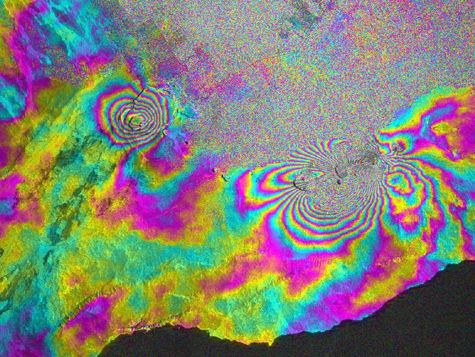
Credit: ASI/NASA/JPL-Caltech
How did you end up working at NASA Goddard?
I’m a postdoc with the NASA Postdoctoral Program (NPP), which means that I came to Goddard through an application process that requires submitting an original proposal with a NASA employee. I reached out to my current advisor at Goddard, who had listed an opportunity on the portal online, and worked with her to brainstorm and develop an idea that we both liked. I then wrote up the proposal and submitted it. My time here has been spent executing on the work in that proposal.
Perhaps it’s because the Ames Research Center did such a great job pitching NASA’s work to me during an elementary school field trip, but the agency has always had a special place in my heart. So I couldn’t say no when this opportunity came up. Thankfully, it ended up working out!
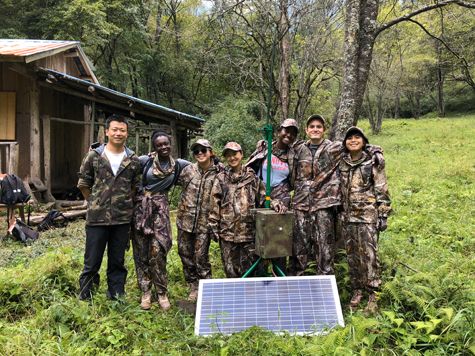
Credit: Stacey Huang
What does a typical day at work look like for you?
Currently, my work is entirely computational, so I spend a lot of time sitting at my desk in front of my computer: whether it be processing radar data, doing calculations, reading about new research, or testing and troubleshooting a new data analysis method. I also spend a decent amount of my time in meetings with colleagues to discuss current research efforts, learn about new techniques and novel applications in the field, hear updates on planned and upcoming missions, and so on. Sometimes I’ll also just join a talk to learn something I’m curious about. That’s what I’ve really enjoyed both in academia and at NASA – there’s a lot of ways to learn about new things that are outside my immediate field.
I usually break up my day into different tasks. I’m most productive with routine tasks in the morning, such as taking care of paperwork or preparing slides for an upcoming presentation, while I spend the afternoon with more research-oriented tasks. Depending on where I am in my work, this could mean a lot of coding or scripting, brainstorming, or calculations. On the other hand, when I’m working on a paper or a proposal, that can completely take over my days; I can easily spend my time morning to evening just writing and editing.
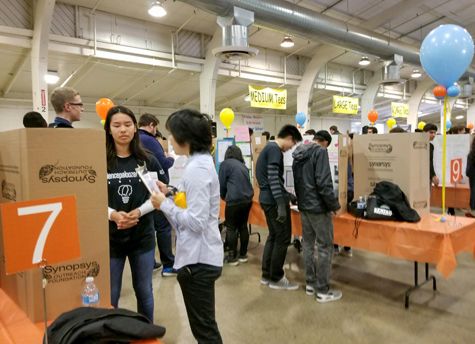
Credit: Stacey Huang
What research accomplishment are you most proud of?
Finally understanding how I can work with different programming languages and have them play nice with one another! It sounds a little silly and cliché, but is something that has significant implications for my research every day. Here’s my point of comparison: when I first started off in the field, I was overwhelmed by the sheer number of different languages researchers used so tended to stick with what I was familiar with, which, among other drawbacks, would get really inefficient when processing massive datasets. I struggled when confronted with the deep complexity of existing codes written in languages I wasn’t familiar with – no one ever taught me Fortran, much less how to interface C and Fortran! Still, there was just no reason to reinvent the wheel given how complex the workflows we use for data processing and analysis can become, so I had to learn. So now, I’m really happy that I’ve been able to get to a point where I can leverage the strengths and weaknesses of the different languages used commonly in my field, understand limitations and how to work with them, and so on. It makes a big difference for my efficiency now that I know which language I can prototype the most quickly in and how to effectively interface programming languages with one another and with my data.
Not to mention that there’s definitely some pride in still knowing how to code in Fortran. When it was introduced in the Hidden Figures movie as the first high-level programming language (in the context of being used at NASA, no less!), I remember thinking, “Wow, and it’s still so relevant to me now.” Albeit I mostly use the modern Fortran90, but the storied legacy of the programming language and its continued use in high-performance computing still impresses me.
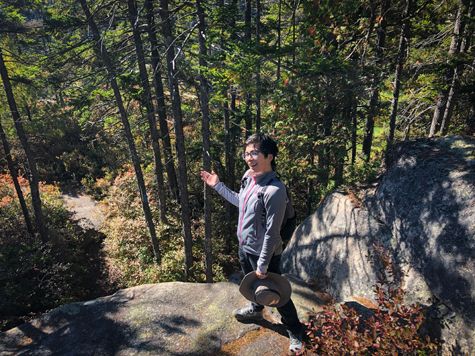
Credit: Stacey Huang
What do you enjoy the most about your job?
Honestly, it’s a great way to keep my mind continuously engaged. Because of the nature of the work and its complexity, there’s an endless amount to learn and try. That fact is also, of course, highly daunting at times due to all the dead ends and false leads. That’s where the support of the scientific community has been critical to keeping me energized and motivated as well. Everything from talks, conferences, and even day-to-day meetings have been important to developing this sense of community. There’s a deep drive to develop rigorous new tools and analysis methods and just learn as much about the world as we can. A lot of researchers in the field also bring a pure enjoyment and intellectual engagement of the subject matter that’s pretty contagious, not to mention there are many people who are really encouraging of early career researchers.
So overall, it’s a very intellectually stimulating job with a supportive community. I’ve tended to have problems with getting distracted easily, but having to wrangle with extremely difficult and open-ended problems every day is a great way to keep my mind fully engaged.
What advice would you give your younger self?
Perhaps the somewhat ironic and contradictory piece of advice to take all advice in context, especially short pieces of advice that sound temptingly pithy! I spent a lot of time trying to figure out what exactly it would mean for me to “Just do what you like!” or “Trust your gut” in a research context: What if I don’t know what I like yet? I’d think. What if my gut is conflicted? I also didn’t fully appreciate how much someone’s personal goals can change the decisions they make about how approach their work and how they use their time – and the kind of advice they then give. I’ve generally found it more helpful for me seek out colleagues and mentors I can talk to who are able to provide both 1) context to the advice I hear and 2) a more detailed discussion suitable to the immediate situation I’m facing – to have a conversation instead of receiving advice as a one-way street about what I should or shouldn’t do. Now, if advice could come in the form of a decision tree instead, I might be more inclined to endorse it for my younger self.
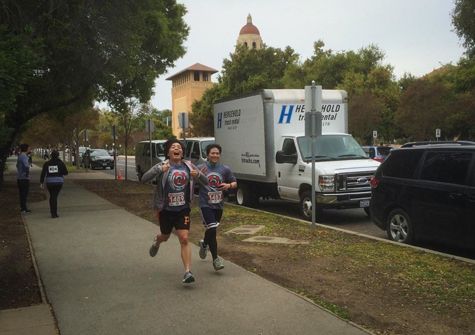
Credit: Stacey Huang
What do you like to do in your free time?
Since I spend so much of my time nowadays sitting down, I really enjoy being active when I can. I’m usually out running several times a week or, when the weather is unfavorable, inside weightlifting. On weekends, I enjoy venturing out to explore local hikes and also very much enjoy visiting local, state, and national parks.
I did also pick up sketching again as a COVID hobby. Although I’m not terribly good at it, I doodled a lot as an idle habit when I was bored in class, and now I find it a really nice break from highly structured, technical thinking and the kind of work I’m doing every day. I’ve been exploring digital art much more thoroughly and have started to play around with color, which is pretty new to me!
When my brain is a bit more awake, I also like to spend time maintaining and expanding my knowledge of world languages. I grew up with a fairly diverse exposure to language and was always curious about all the differences and similarities between everything I was hearing and learning, and how often things were lost in translation. This has led me to the field of contrastive linguistics. What’s interested me a lot recently is the fact that a wide diversity of language families coexist in East and Southeast Asia, but there’s been so much sharing over time that you can really see mutual influences cropping up everywhere, sometimes in rather unexpected places. It’s a really interesting contrast to the large family of Indo-European languages, which have had a lot of sharing over time in addition to belonging to the same language family. Engaging with other languages is also a nice way to get out of my own mind space and it offers a fascinating peek into other ways of looking at the world. In that sense, I probably do have to give credit to all those science museums I visited as a kid for leading me to where I am today, as I otherwise may have been as interested in the State Department as NASA.
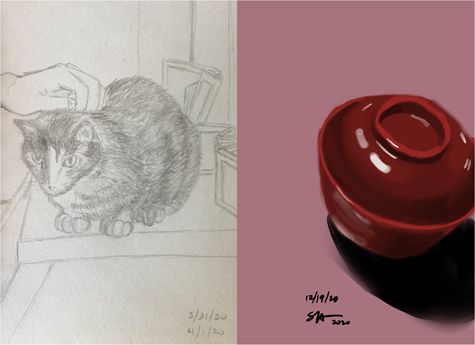
Credit: Stacey Huang
Biography
Home Town:
San Jose, CA USA
Undergraduate Degree:
BSE Electrical Engineering, Princeton University, Princeton, NJ USA
Post-graduate Degrees:
MS & PhD Electrical Engineering, Stanford University, Stanford, CA USA
